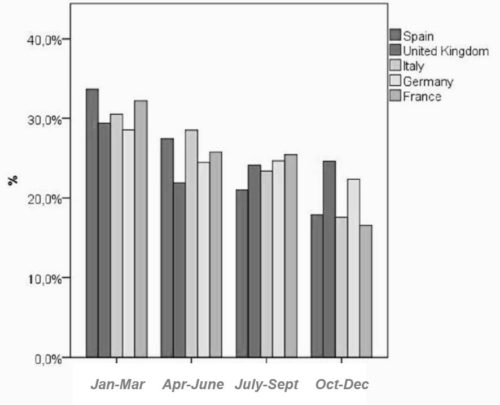THE LIMITS OF TRADITIONAL SCOUTING
Biases related to traditional scouting methods are directly observable through a relative age effect. The relative age effect is the observation that the majority of professional footballers are born in the first six months of the year. This finding runs across the five major European championships.
Let’s imagine that young players’ month of birth does not bear any sort of importance. We then should find equivalent proportions of professional players born across different months of the year. But it is not the case. The relative age effect is the outcome of talent identification at teenagehood based on physical, morphological and technical criteria… At a period of life when a few months difference has a tremendous importance on performance. The result? The professional players of your squad were the best among others when identified and selected… at 14 years old!
To sort these scouting and recruitment biases out, methods like bio-banding and the ordered shirts technique have been developed. These methods can be efficient to counteract some traditional scouting biases, but require substantial organization involving several clubs.
So what solutions should you adopt, if physical, technical and morphological skills are not reliable criteria of assessment in young footballers? Let’s take cognitive and mental skills into consideration.



No responses yet